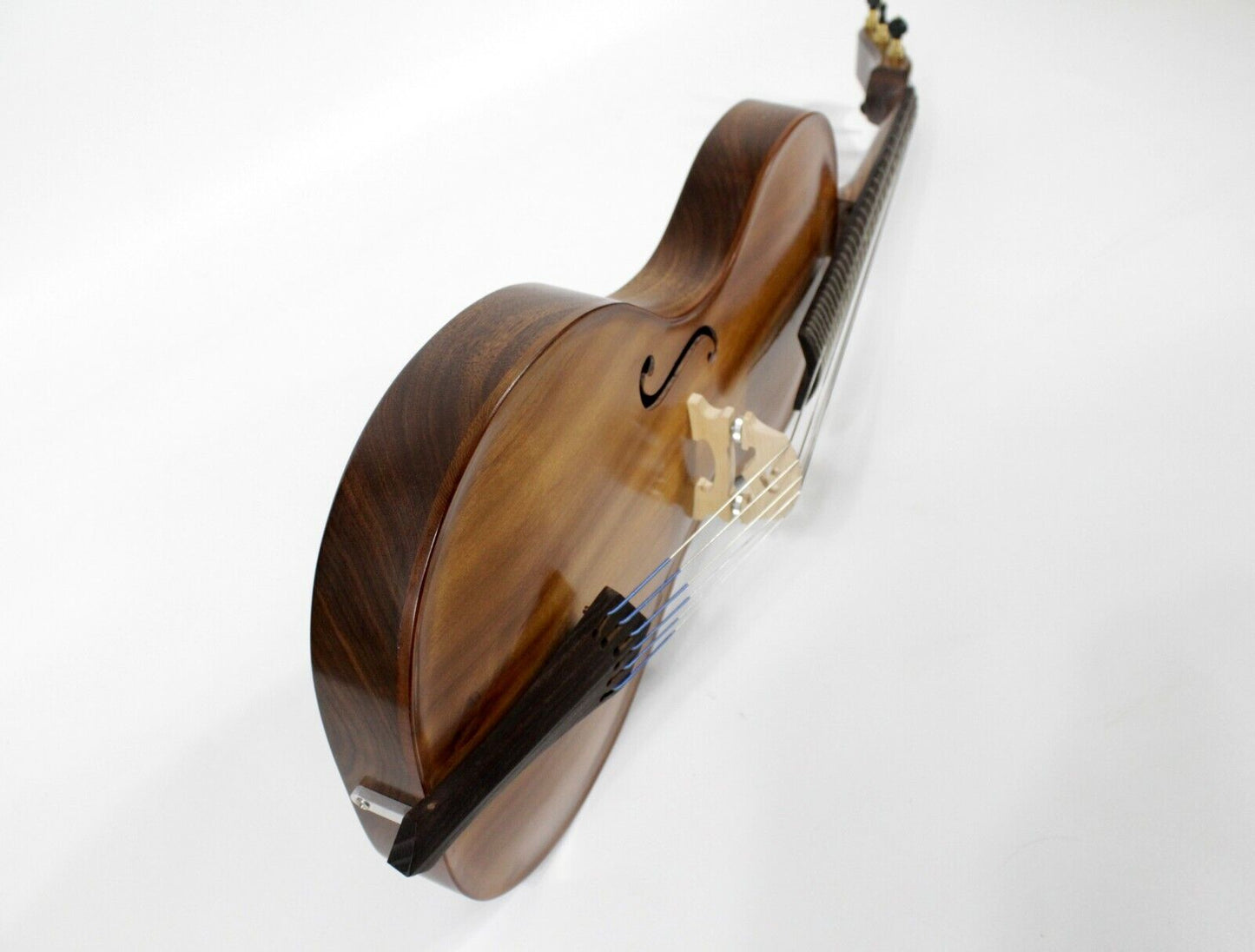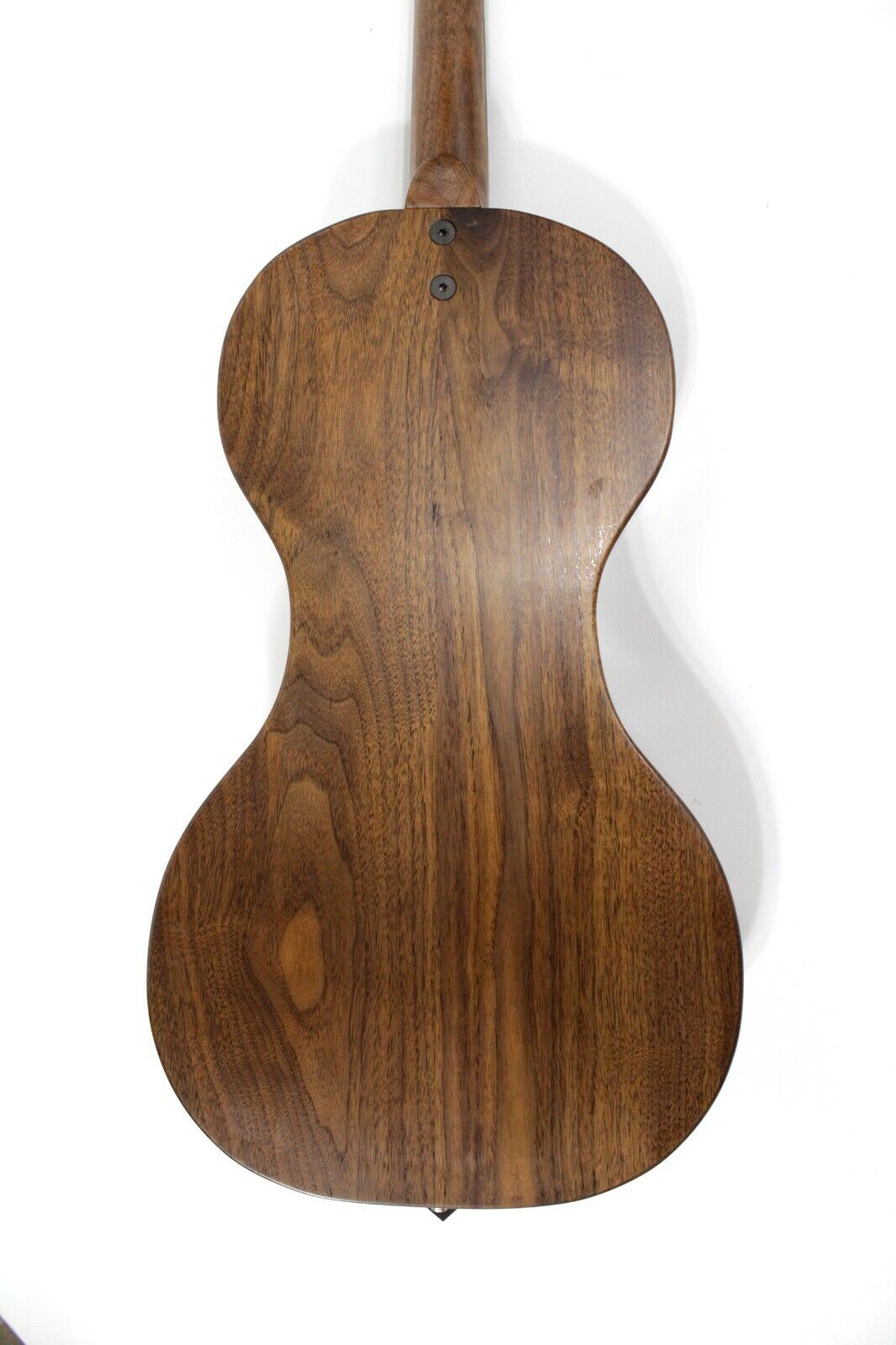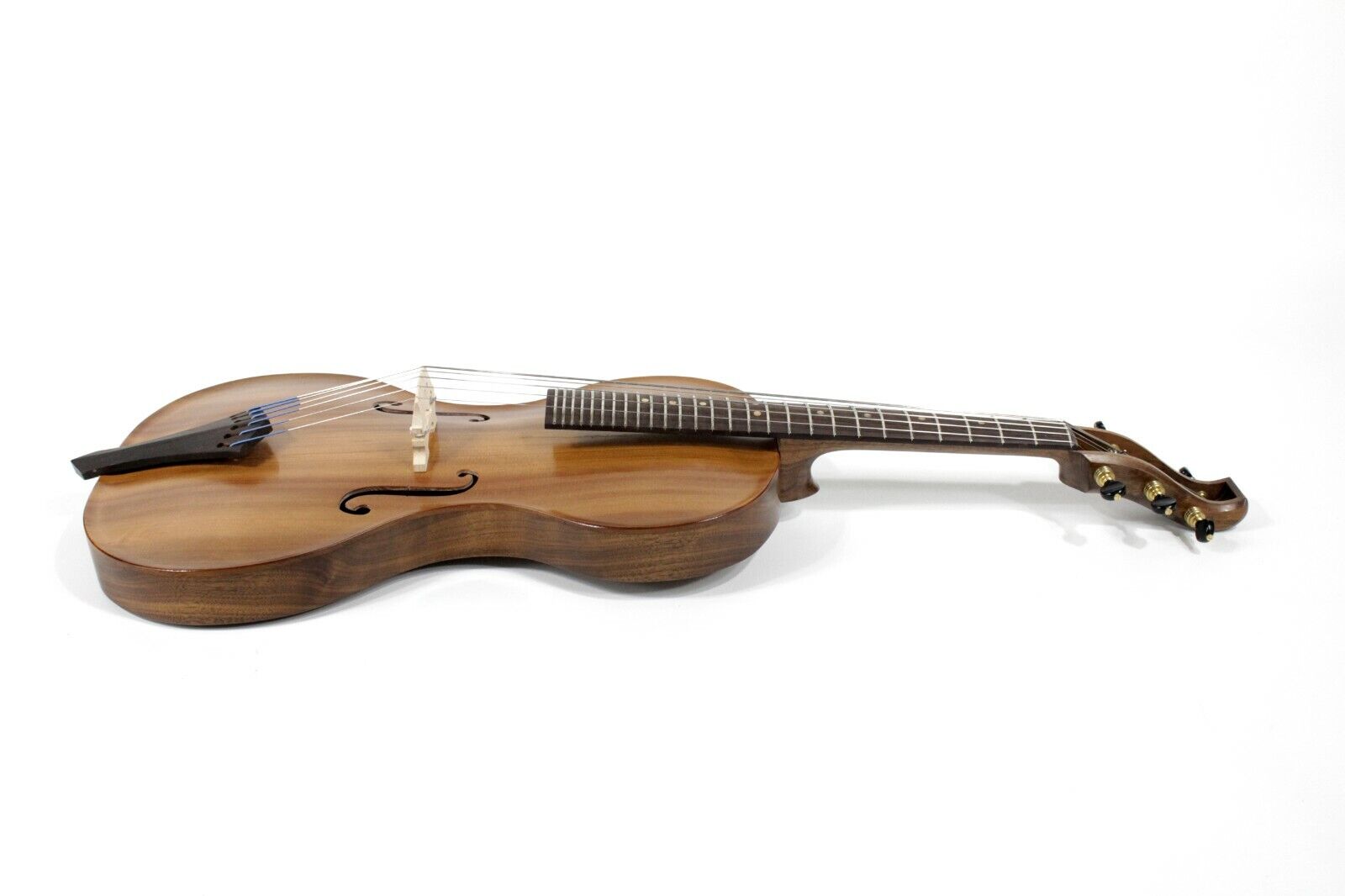Peters
Peters Violatar, Arpeggione, fretted cello cellotar, bowed guitar viol
Peters Violatar, Arpeggione, fretted cello cellotar, bowed guitar viol
Couldn't load pickup availability
Guitarviol
Introductions-
This arpeggione, like other instruments I have made, was born from personal need. I enjoy writing songs and recording, and I wanted to get realistic solo string sounds at home. I messed around with violin and cello a little bit, but did not have hours a day to devote to practice. I looked into midi options but most solo string vst's sound like junk, and even the really good ones still sound cheesy unless you spend a lot of time automating. That's pretty time consuming, and even after all that effort you can still tell pretty easily that they aren't real strings.
Even if you set all that aside, from a writing standpoint there is no comparison between plunking out string lines on a keyboard, and actually picking up a bowed instrument. Simply put, I almost always like what I write on the Arpeggione more than what I come up with on vsts. That's why I first started developing this instrument, the first iteration looked and played quite a bit different, but after spending a couple years playing it and learning its shortcomings I redesigned and developed what you see here. My goal in creating it was to make bowed instruments, and realistic string sounds more accessible to guitarists and other musicians like you!
FAQs-
In an effort to save time answering questions I have tried to include a lot of details. Before reaching out to me please look through the information below to see if your curiosities have been addressed. thanks!
Specs-
Top- solid carved top from western red cedar
back and sides- Walnut
Neck- Walnut (maple on request)
Number of frets- 24
Tuners- Gotoh Planetary tuners
Bridge- Quarter Sawn Rock maple with thumbwheels for height adjustment.
Fretboard- torrefied red oak (maple on request)
Tailpiece material- to match fretboard
Strings- super sensitive sensicore strings come standard. D'addario helicore strings are available for drop tunings for an additional fee.
Neck joint- mortise and tenon joint secured with machine screws.
Finish- hand rubbed and polished varnish.
Bow- middle of the road carbon cello bow and rosin are included
What is it?-
An arpeggione is an instrument that is similar to a cello, it is held between the legs in a seated position and played with a bow. Unlike the cello or other members of the violin family however it has frets, it is tuned in fourths instead of fifths, and it has six strings instead of four. In short it is a bowed guitar, the six strings are tuned in std guitar tuning, and there is no need to learn to play fretless. If you can play guitar you should be able to play this, all you need to learn is how to hold and use a bow
Build Timeline-
These are made to order and may be done in 6 months or so to complete, but can take longer. Please contact me prior to purchases to discuss my work load and get an idea how soon I might be able to start on your build as it can range anywhere from a couple weeks to several months. Just to reiterate, this is made to order, you are not buying the exact item photographed
What does it sound like?-
Here are a couple sound clips. Please keep in mind I am not a phenomenal musician or recording engineer, but hopefully these clips will give you and idea of what they sound like.
https-//soundcloud.com/shad-peters/farewell-to-aragog
https-//soundcloud.com/shad-peters/ashoken-farewell
https-//www.youtube.com/watch?v=hgkWQp2mxlE
What should I do for a case?-
One of the shortcomings of many custom built instruments with unique shapes is that they will not fit into any type of std case that is available. Custom built cases can often exceed $1000. I wanted to try to avoid the need for custom built cases for this instrument, to that end I designed it to be similar in size to a 1/2 scale cello. As a result there are quite a few options out there, from gig bags to molded fiberglass, that will fit this instrument. They range in price from around 70 dollars up to 500 (and beyond) depending on what you want. Because the body of this instrument is only around 3 inches thick any hard case will be deeper than necessary, however this issue is easily solved by the addition of some extra padding to the bottom of the case. The cost of a case is not included in the price of the instrument, however you will receive a substantial shipping discount if you purchase a case that is strong enough to adequately protect the instrument during shipping.
Shipping-
These instruments are expensive to ship. This is in part because they must be shipped fully insured, however, the shipping cost is also inflated because they must be packaged very securely. They require the addition of plywood panels and other framing to give the box enough rigidity to keep the instrument completely protected and secure in transit. These additional packaging materials and labor add to the shipping cost.
How are they made?-
They are built using a mix of modern and old-world techniques. In an effort to keep costs low and maintain a high degree of consistency, much of the work is done using labor saving cnc where feasible. However, fine tuning and final fit, finish, and setup are all done by hand.
Returns-
Because these are made to order and require a tremendous amount of time and effort to produce returns are not accepted, however rest assured that I stand behind my work and will do everything in my power to ensure your satisfaction with your purchase.
Thanks for looking! if you have any other questions please don't hesitate to ask. Have a good Day!























